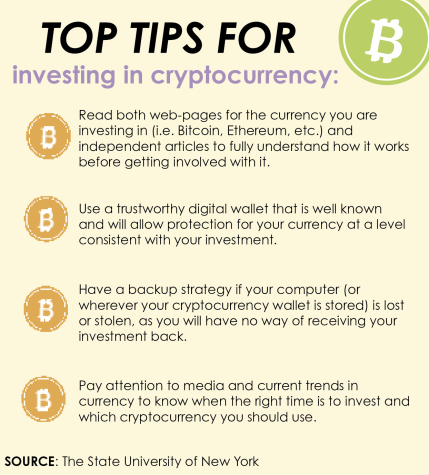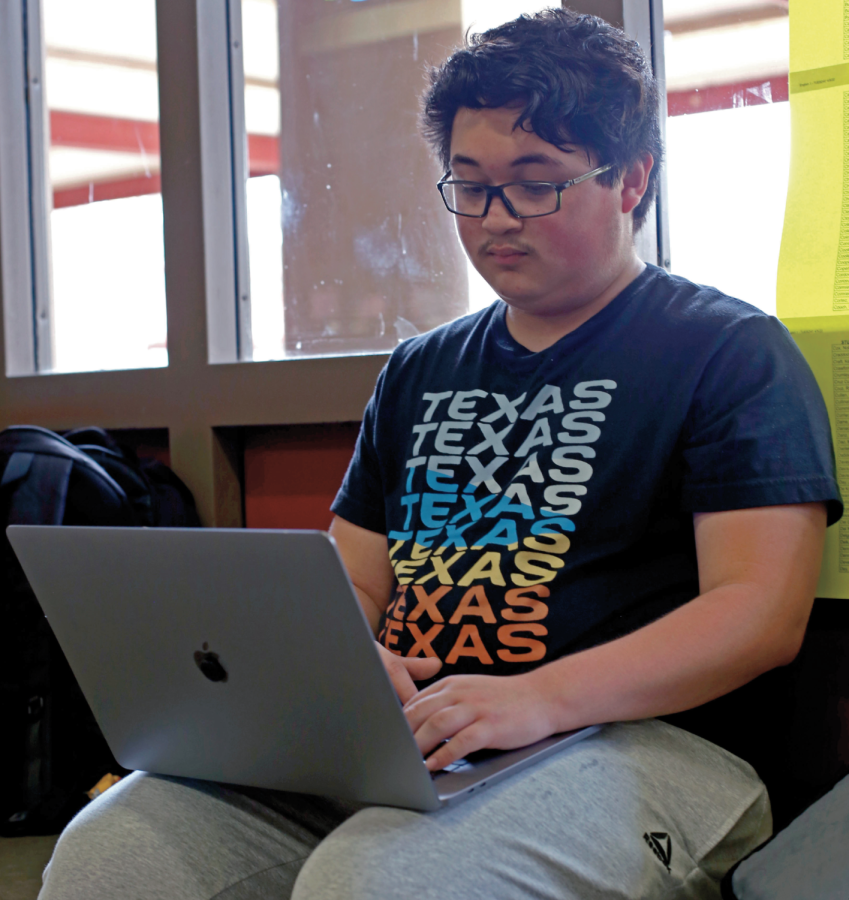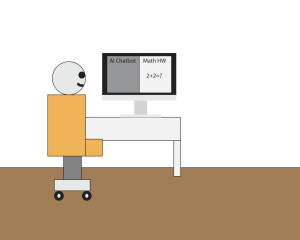Crypto craze captures student interest
Sophomore Nick Vega buys his own form of this digital currency to use and invest in
MAKING BANK: Sophomore Nick Vega checks on the status of his cryptocurrency, a form of online currency that has been increasing in popularity. A few months ago, Vega bought a fork of the Solana cryptocurrency blockchain and has been using an investing in it since.
May 5, 2022
The dishes are washed, floors are vacuumed, and all is calm in the Vega household.
Cha-ching.
Sophomore Nick Vega gets paid for completing his chores. His family does things a bit differently than the average family, however. His hard work isn’t rewarded with a crisp dollar bill or Venmo payment, but with cryptocurrency.
Cryptocurrency is digital money that is decentralized, meaning that it does not require a third party, like the government, to maintain its value. Transactions made with cryptocurrency are validated on a blockchain, or a record of information that is updated simultaneously across machines that are using cryptocurrency. The blockchain allows records of cryptocurrency transactions to be accurate and identical across participating machines.
“I’m currently investing in Bitcoin, Solana, and a couple other minor cryptocurrencies,” Vega said. “I’m was hoping I would make some profit, but so far nothing yet. I decided to start my own cryptocurrency using Solana’s blockchain because I thought it would be cool and because I’m using it in my household.”
Vega bought his own cryptocurrency a few months ago and has been using and investing in it since. In addition to receiving it as a payment for chores, Vega uses cryptocurrency as a form of currency with his siblings.
“I introduced cryptocurrency to my parents and they liked it,” Vega said. “Essentially, they pay us for doing chores around the house, and then we pay them for being able to get our computer after we’ve done our homework or just free time.”
Popular cryptocurrencies, like Bitcoin, Solana, and Ethereum, are becoming increasingly widespread alternatives for online payments. Vega joined the cryptocurrency bandwagon after doing his own research.
“I’ve always been interested in tech and last year, I started looking into buying stocks from Tesla, Nvidia, Apple, and more, and then I watched a YouTube video on how cryptocurrency works,” Vega said. “I was interested so I started doing more research. Using the Solana blockchain is a lot cheaper than having to buy your own servers to process all the data that’s coming through.”
Computer Science teacher Bowman Brannon has also bought cryptocurrency in the past. Vega has continued pursuing his interest in technology in Bowman’s AP Computer Science Principles class.
“I have some experience with cryptos and bought some Bitcoin, Etherium, Litecoin, and Dogecoin a few years ago,” Brannon said. “It is fun to get excited about tracking their individual progress day-to-day, but the volatility of the market makes this approach stressful.”
Cryptocurrency is growing among other students in the Bowie community. Penny cryptocurrencies, which are typically cheap to buy but unpredictable, are a popular choice.
“I got my dad into cryptocurrency about a year ago,” junior Hank Turner said. “I had him invest $300 into two penny cryptocurrencies, $200 into Elongate and $100 into Safemoon. In two months, the $300 turned into $20,000.”
NFTs, or non-fungible tokens, are unique digital items, such as drawings or videos, that can be purchased using cryptocurrency. Many people, including Vega, were drawn to research cryptocurrency because of the recent spike in demand for NFTs. However, many also believe that they have their restrictions.

“I think students should have a general understanding of crypto, but I also think the excitement around all digital currencies is starting to feel underwhelming,” Brannon said. “NFTs were all the rage, but we are now seeing their limitations. Also, from a practical perspective, the mining related to cryptos and NFTs is incredibly greedy on our resources.”
Despite any negative consequences, Vega believes that cryptocurrency has had a positive impact on how people deal with money.
“Crypto will change the world,” Vega said. “It’s already changing the world. It’s an easier way for people to carry around money and is harder to be stolen because it’s not physical and more secure.
To use cryptocurrency, users need a cryptocurrency wallet. This is a software program that interacts with the blockchain and allows cryptocurrency to be sent and received. For this reason, many retailers do not yet accept cryptocurrency as a form of payment.
“I wouldn’t use cryptocurrency as my main source of currency because it’s not accepted with everything for trading,” Turner said. “I would advise students to watch media and watch trends in currency to invest at the right time.”
After experiencing it himself, Vega also has some advice for students looking to invest in cryptocurrency.
“Do your research,” Vega said. “There’s a lot of currencies that just aren’t worth it or may look like they’re very promising but may end up in a loss.”
Outside of school, Vega is an ambassador for a student Artificial Intelligence program. He plans on using his passion for computer science to continue investing in his cryptocurrency.
“I think it’s really cool that Nick has done some work in this area,” Brannon said. “Like the projects he does in my AP computer science class, Nick is intrinsically motivated. He has his own goals of what he wants to accomplish, and often seeks to go well beyond the requirements of any rubric I put before him.”











